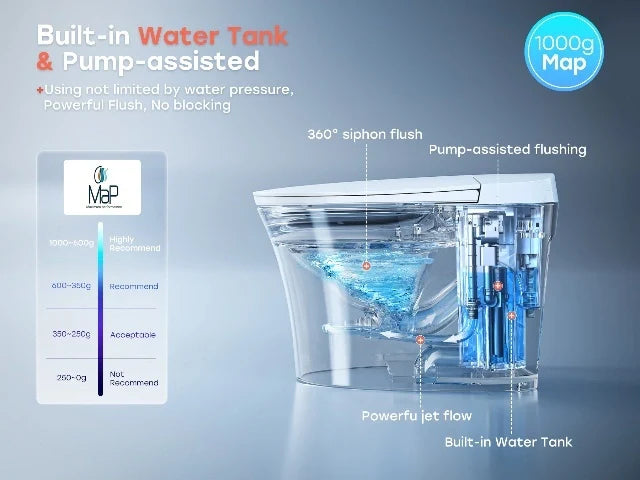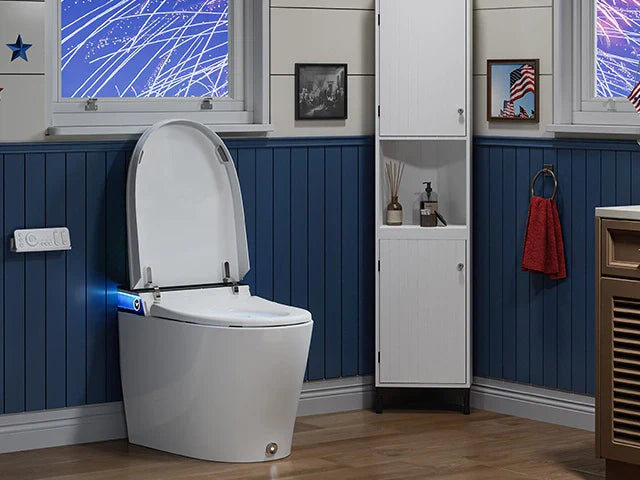What Are the Electrical Requirements for a Smart Toilet?
As smart home technology evolves, bathrooms are no exception. One of the most exciting upgrades in modern bathrooms is the smart toilet. With features like heated seats, bidet functions, air dryers, and self-cleaning nozzles, smart toilets require a reliable power source. In this article, we break down the essential electrical requirements for a smart toilet to ensure a safe and smooth installation.
Why Do Smart Toilets Need Electricity?
Unlike traditional toilets, smart toilets are packed with advanced features, such as:

- Heated seats
- Warm water bidet spray (front and rear)
- Air dryer
- Automatic lid opening and closing
- Night light and deodorizer
- Self-cleaning nozzles and UV sterilization
- Remote or app control
All these functions rely on electric power, making a proper power source essential.
Standard Electrical Requirements
| Component | Specification |
|---|---|
| Voltage | 120V AC |
| Frequency | 60 Hz |
| Outlet Type | GFCI (Ground Fault Circuit Interrupter) |
| Amperage Required | 10 to 15 amps |
| Power Consumption | 600W – 1400W |
| Plug Type | 3-prong grounded plug (Type B) |
What Kind of Outlet Do You Need?
You must install a GFCI outlet near the toilet for safety. This protects users from electric shocks in moist environments. Ideally, the outlet should be:
- Within 4 feet of the toilet
- Mounted low on the wall behind or beside the unit
Note: Do not use an extension cord. Always connect the toilet directly to a GFCI-protected outlet.
Dedicated Circuit: Is It Necessary?
Smart toilets can draw significant power. If your bathroom already has high-wattage appliances (like a hair dryer or heated floor), a dedicated 15–20 amp circuit is recommended to prevent overloads.
Local Electrical Codes and Permits
Check with a licensed electrician or local authority to determine if a permit is needed. Electrical work in bathrooms must comply with the National Electrical Code (NEC) and local safety regulations.
Can Smart Toilets Work Without Power?
Some models include:
- Battery backups for flushing during outages
- Manual flush levers as a backup
However, advanced functions like bidet sprays and heated seats will not work during a power outage unless the unit includes backup power support.
Smart Toilet Power Ratings (Examples)
| Model | Voltage | Power | Amps |
|---|---|---|---|
| HOROW T05 | 120V | 1050W | 10A |
| TOTO Neorest 700H | 120V | 1400W | 12A |
| Kohler Veil K-5401 | 120V | 1200W | 10A |
| HOROW T33 | 120V | 850W | 8A |
How Much Power Does a Smart Toilet Use?
On average, smart toilets consume:
- 1–2W on standby
- 600–1400W when active (e.g. drying or heating water)
Annual electricity usage ranges from 40–100 kWh, depending on usage habits. That’s similar to a small refrigerator or flat-screen TV.
DIY vs. Professional Installation
While installing a smart toilet may seem simple, hiring a licensed electrician ensures:
- Safe and code-compliant outlet installation
- Proper GFCI protection and grounding
- Reliable power supply without overloads
If your bathroom lacks a GFCI outlet or you’re unsure of your circuit’s capacity, call a professional.
Final Thoughts
Smart toilets bring luxury, hygiene, and efficiency to your home—but they require proper electrical planning. Before purchasing, make sure your bathroom has the correct:
- Voltage and amperage capacity
- GFCI outlet placement
- Circuit availability
A well-powered smart toilet will function reliably, safely, and enhance your bathroom experience for years to come.
FAQs
Q: Can I plug a smart toilet into a regular outlet?
A: Only if it’s a GFCI outlet with the correct voltage and amperage.
Q: Will a smart toilet increase my energy bill?
A: Only slightly—around $5 to $15 per year depending on usage.
Q: Can I install the electrical connection myself?
A: You can, but a certified electrician is recommended for safety and code compliance.
Looking for a smart toilet that suits your bathroom’s electrical setup? Browse our collection or contact us for expert advice!








Leave a comment
This site is protected by hCaptcha and the hCaptcha Privacy Policy and Terms of Service apply.